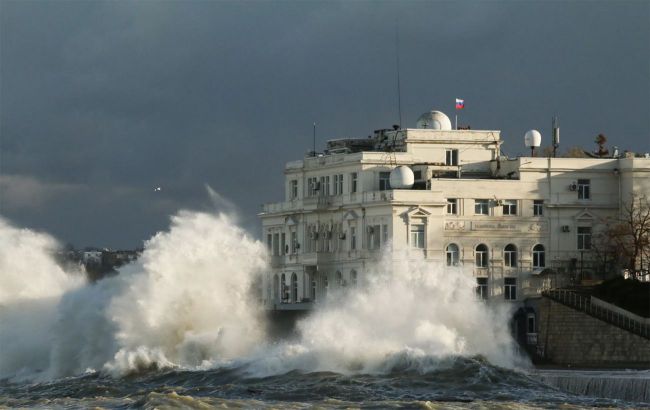Black Sea storm impacts military operations on the front - ISW
 The cyclone in the Black Sea has affected military operations (photo: Russian media)
The cyclone in the Black Sea has affected military operations (photo: Russian media)
The cyclone in the Black Sea and southern Ukraine has caused damage to infrastructure in many coastal areas of southern Russia and occupied Ukraine. It also affects the pace of military operations along the front line in Ukraine, but it has not completely halted military activities, according to the Institute for the Study of War (ISW).
Russian sources have published images and footage showing the impact of the cyclone on civilian and transport infrastructure in coastal areas of Krasnodar Krai, including near Sochi, Anapa, Gelendzhik, Novorossiysk, and Tuapse.
Ukrainian and Russian sources also noted that coastal areas of occupied Crimea, occupied Kherson region, and much of Odesa region were heavily affected by heavy snowfall and strong winds, leaving a significant portion of the population without electricity.
In particular, the Ukrainian Navy and the Southern Operational Command of Ukraine reported that the hazardous weather in the Black Sea forced Russia to return all its naval ships and missile carriers to their bases.
A well-known Russian military blogger has warned that the threat of mines in the Black Sea will increase for both military and civilian vessels in the coming days. The storm has disrupted buoy nets, scattering minefields and causing mines to drift across the entire northwestern Black Sea.
Several sources have also reported that the storm damaged railway lines in coastal areas, which could have logistical consequences for Russian forces in occupied Crimea and southern Ukraine.
Despite the challenging weather conditions, both Russian and Ukrainian forces continue ground attacks across Ukraine, albeit somewhat slower due to the snow and, consequently, poor visibility.
Russian military bloggers have noted that heavy snow and wind have worsened visibility and complicated aerial reconnaissance and artillery adjustments on the Kherson front. However, they mentioned that Ukrainian forces took advantage of the conditions of poor visibility to consolidate positions on the eastern (left) bank of the Dnieper River.
Colonel Oleksandr Shtupun, the spokesperson for the Tavria Joint Forces in Ukraine, reported that Russian forces on the Tavria front (from Avdiivka to the western part of the Zaporizhzhia region) reduced artillery usage by one and a half times and drone usage by six times due to weather conditions. He emphasized that Russian forces continue to intensively use aviation in the Avdiivka direction.
The challenging winter conditions will force both sides to rely more on ground attacks led by infantry, given the absence of opportunities for aerial reconnaissance and artillery correction.
The storm in the Black Sea
Temporarily occupied Crimea has been hit by a powerful storm since November 26. In the media, the storm in the Black Sea has already been dubbed the strongest in the last 100 years, and occupiers report the first casualty.
The so-called head of Crimea, Sergey Aksyonov, stated that due to the storm, 425 thousand people in Crimea were left without electricity.
The most affected areas in the peninsula are Chornomorske, Saky, Bilohirsk, Simferopols, Zhovtnevy, Bakhchisarai, and Leninsky districts.

